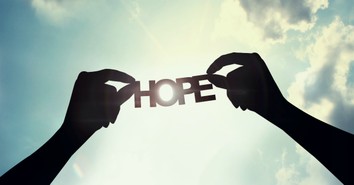The 4 Biggest Lies We Believe about Helping Others

Helping someone take the smallest step in the right direction just might lead to the biggest leap forward they’ll ever take. Too often though, we get confused about what it means to help others. This confusion often makes us feel apprehensive, paralyzed, or ineffective.
“What if I mess this up? What if they misunderstand me? What if they question my motives, and make a big deal on Facebook about how I made their situation even worse? What if I look stupid or say the wrong thing?”
Let’s debunk a few of the biggest lies about helping others and replace them with the truth.
LIE #1: I am responsible for 100% of the person’s healing process.
Nope. You simply play a part in the healing process. We often fear the risk of getting involved in someone else’s problems because we feel that those problems are too complex and therefore out of our expertise. And you know what? You’re absolutely right. Healing is God’s responsibility, not yours. You can only give where you can and let others give where they can. You’re not required to take on another full-time job as a rescuer; you just need to be part of the team.
LIE #2: I should be the expert on how to solve this person’s problem.
False. Saying “I don’t know” is completely OK. Even professional counselors would consider their role to be more of a facilitator for people to process their emotions than an instruction manual. This should be a huge weight off your shoulders. Your pedigree doesn’t dictate your ability to be a sounding board for someone who is hurting. Don’t play the expert; be a friend. And remember, your first role isn’t to “save” people, but to love people.
LIE #3: Things get fixed fast.
The reality is that there is no timetable. Ask the average person how long it usually takes to recover from a typical setback. I bet most would say it takes around three months. Some might say a couple weeks. The fact is that working through hurt ALWAYS takes longer than we think. There are no quick fixes. We live in a culture where everything is instant. But you can’t microwave grief like you can a Pop-Tart and you can’t heal in the time it takes to snap a photo on Instagram. Healing is like film. It takes a long time to develop before it comes out of the dark. In our digital world, hope is analog.
LIE #4: I won’t know what to say to people.
The good news is you don’t have to say much. In fact, the greatest gift we can give people is to ask questions, listen empathetically, and simply let them process. Don’t underestimate how helpful it is to simply provide a space for others to talk things out. Asking simple questions to an individual often helps clarify things more than giving answers or opinions. A great question to ask someone struggling with a problem is this: “Imagine if I were in your position right now; how would you coach me? What would you say to me?” These types of questions allow the person to problem-solve on their own. It allows the person to step out of the pain for a moment and give good counsel to their “imaginary self.”
The next time you’re feeling gun-shy about helping someone who is hurting, filter your emotions through these four lies and their corresponding truths. See if you come out the other side braver and less stressed about your ability to be a significant part in someone’s rescue story. Your friendship, your presence, and your simple, honest questions can be like a grace-filled snow cone on a hot judgmental day for someone who’s hurting.

Publication date: September 20, 2016
Image courtesy: Thinkstockphotos.com
Originally published September 20, 2016.





